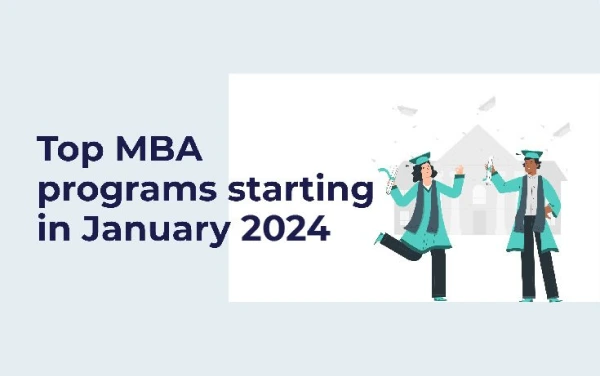US MBA Programs

The United States is home to some of the highest-ranked MBA programs worldwide, attracting students from all corners of the globe. For students aiming to study abroad, an MBA from a top US institution offers not only academic rigor but also unparalleled networking and career opportunities. Schools like Harvard, Stanford, and Wharton consistently rank among the world’s best, promising strong return on investment (ROI) and access to high-paying jobs in finance, consulting, technology, and other leading sectors.
With numerous rankings available, it’s crucial to understand what makes these programs stand out in terms of career outcomes, alumni salaries, and post-graduation success. This guide explores the top-ranked MBA programs in the US, focusing on the factors that make them highly desirable for international students and the career advantages they offer.
Criteria for Ranking the Highest US MBA Programs
Understanding what makes an MBA program “top-ranked” requires examining a few core criteria used by leading ranking publications like U.S. News & World Report, Financial Times, and Bloomberg Businessweek. While each publication may weigh factors differently, certain elements are universally important in determining a program’s prestige and career impact:
Alumni Salary and Career Outcomes
Alumni salary is a key indicator of an MBA program’s return on investment. Programs like Stanford Graduate School of Business and Harvard Business School have alumni salaries that average between $150,000 and $180,000, often including performance bonuses and stock options. (MBA & Beyond).
This is particularly attractive to international students who often seek US MBAs for their high salary potential and strong alumni networks.
Job Placement Rates and Industry Connections
Job placement rates are critical for assessing a program’s effectiveness in preparing students for competitive industries. Leading MBA programs maintain high placement rates within three months of graduation—Harvard and Wharton report job placement rates above 90%, with top hiring industries being consulting, finance, and technology.
Schools that foster strong connections with industry leaders offer students a smoother transition from graduation to high-profile roles at companies like McKinsey & Company, Goldman Sachs, and Amazon.
Academic Rigor and Curriculum Flexibility
Top-ranked programs are known for rigorous academics and curriculum flexibility, allowing students to customize their learning to align with career goals. For example, Chicago Booth offers a flexible curriculum that emphasizes data-driven decision-making, while MIT Sloan focuses heavily on technology and innovation. These distinctions in academic approach allow students to specialize and gain skills that are highly valued by employers.
Scholarships and Financial Aid Opportunities
The cost of an MBA can be a significant barrier, especially for international students. Many of the top programs, including Wharton and Stanford, offer need- and merit-based scholarships, as well as fellowships for students from diverse backgrounds. Harvard Business School, for instance, provides over $40 million in need-based scholarships annually, helping to make the program accessible to students from all financial backgrounds.
Top 5 Highest US MBA Programs by Ranking
For students aiming to study abroad, attending a top-ranking MBA program can be transformative. Here’s a closer look at the five highest-ranked MBA programs in the U.S., based on their reputation, salary potential, and return on investment (ROI):
- Stanford Graduate School of Business (GSB): Stanford consistently leads in MBA rankings, especially for students pursuing careers in technology and entrepreneurship. The 2024 class reports average starting salaries of around $182,000, making it the highest among U.S. business schools. Stanford’s West Coast location also connects students with major tech firms in Silicon Valley.
- Harvard Business School (HBS): Harvard remains one of the most prestigious programs globally, known for its leadership curriculum and robust alumni network. Average starting salaries for HBS graduates are $175,000, with placement rates above 90%, drawing top employers like McKinsey, Bain, and Goldman Sachs.
- Wharton School at the University of Pennsylvania: Wharton is highly regarded for finance and consulting, attracting employers who offer competitive compensation. The average starting salary for Wharton graduates in 2024 is around $172,000, with high signing bonuses and performance-based incentives. Wharton’s ROI makes it one of the best options for those targeting finance roles.
- University of Chicago Booth School of Business: Known for its data-driven curriculum, Booth ranks as a top choice for finance and consulting, with graduates earning average salaries of $180,000. Booth’s flexible curriculum and high placement rate in sectors like consulting and investment banking add to its appeal for high ROI.
- MIT Sloan School of Management: MIT Sloan is renowned for its focus on innovation and technology, preparing graduates for roles in tech and finance. Average starting salaries are around $165,000, with tech giants and consulting firms among the top recruiters. Sloan’s strong ROI makes it a popular choice for those entering the tech industry.
Highest MBA Programs in Terms of Salary and ROI
While rankings provide an overall view, examining salary and ROI helps students gauge the financial impact of an MBA. Programs with the highest ROI include:
- University of Texas at Austin (McCombs): With an ROI of over 420%, McCombs graduates earn an average salary of $175,000 against lower tuition costs, making it a top choice for ROI.
- University of Michigan (Ross): Ross has an impressive ROI due to its $175,000 average starting salary and strong alumni network in consulting and finance. Its ROI of 343% places it among the top in the U.S. .
- Duke University (Fuqua): Known for its strength in healthcare and consulting, Fuqua’s $175,000 starting salary and high placement rate contribute to an ROI of 319%.
These schools demonstrate that a strong ROI isn’t limited to top-5 ranked programs, as their lower tuition costs combined with high salaries make them financially viable options.
Want to pursue an MBA but not sure if your profile fits?
Talk to our Profile Experts to know your chances for a top MBA Program.
GET A FREE PROFILE ANALYSISCareer Opportunities and Placement Rates
Placement rates and industry connections are key for MBA graduates seeking high-paying roles. Schools like Wharton, Booth, and Sloan maintain over 90% placement within three months of graduation, with industries such as consulting, finance, and technology leading in employment offers. For example, MIT Sloan graduates frequently secure roles at Amazon and Google, while Wharton is renowned for finance placements with firms like J.P. Morgan. Stanford’s prime location attracts tech firms in Silicon Valley, ensuring strong placement in high-paying technology roles.
How to Choose the Right High-Ranking MBA Program
Choosing the right MBA program is crucial to meeting your career and personal goals. Here are key factors to consider:
- Career Alignment: Look into the industries and companies where each program has strong placement records. For example, Stanford is ideal for tech, while Wharton excels in finance. Also, consider programs with dedicated centers in fields like healthcare or sustainability, if that aligns with your goals.
- Location: The geographical setting of the MBA program can impact networking opportunities and job placements post-graduation. Programs in cities like New York (Columbia and NYU Stern) and Chicago (Booth) offer proximity to financial and consulting hubs, while West Coast schools like Stanford provide access to Silicon Valley tech firms. Location may also affect cost-of-living and post-graduation opportunities based on local job markets.
- Program Specializations: Many top MBA programs offer specialized tracks in areas such as entrepreneurship, consulting, and data analytics. For example, MIT Sloan is known for its focus on technology and innovation, making it ideal for students aiming to enter tech or data-driven roles. Review the curriculum and available specializations that best match your desired industry and skillset development.
- Return on Investment (ROI): Calculate the expected ROI by considering the total cost of the program (including tuition and living expenses) against the average post-graduation salary. Schools like Harvard and Michigan Ross offer high ROI due to strong salary outcomes. The University of Texas at Austin’s McCombs MBA is particularly notable for its ROI of over 420%, making it a financially sound choice.
- Campus Culture and Support: Assess whether the program environment suits your learning and social preferences. Some schools, like Kellogg at Northwestern, are known for collaborative environments, while others, like Wharton, are structured to encourage competition. Visiting the campus or attending virtual events can give a better sense of the culture.
Conclusion
Choosing from the highest US MBA programs requires balancing various factors, including career prospects, location, program specialization, and financial considerations. By selecting a program that aligns well with your goals and offers a strong network in your field, you can ensure that your MBA experience is both fulfilling and financially rewarding. For international students, these factors are critical to maximizing the MBA experience and ROI in the U.S., making the degree a pivotal investment in long-term career growth.
If you are looking to build impactful MiM applications and scholarship applications and need assistance with the process, please feel free to reach out to us.



Leave a Reply